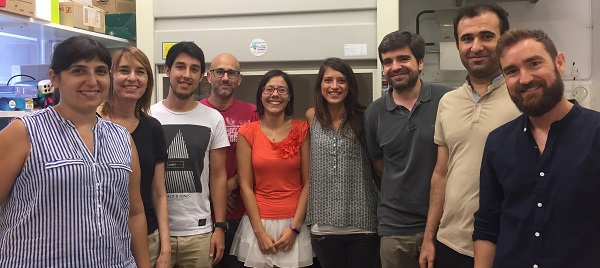A study published in the journal Cell Reports describes a new pathway related to the activity of receptors that are associated with several metabolic or cardiovascular diseases such as diabetes, obesity and hypertension. According to the conclusions, many antidiabetic effects of the activators of the PPARβ/δ receptors ─potential therapeutic targets for the treatment of type 2 diabetes─ are regulated by cytokine GDF15, a protein expressed under conditions of physiological stress.
The study contributes to find new therapeutic pathways for the treatment of metabolic dysfunctions and it is led by Professor Manuel Vázquez-Carrera, from the Faculty of Pharmacy and Food Sciences, the Institute of Biomedicine of the UB (IBUB), the Research Institute Sant Joan de Déu (IRSJD) and the Diabetes and Associated Metabolic Diseases Networking Biomedical Research Centre (CIBERDEM).

Cytokine GDF15, a factor that regulates the energy metabolism
PPARs (perosyxomel proliferator activated receptors) are transcription factors of the superfamily of hormone nuclear receptors. The dysfunctions of these receptors are related to several metabolic or cardiovascular pathologies which have a high incidence in the population.
The paper published in Cell Reports confirms that many antidiabetic effects of the PPARβ/δ activators work through the cytokine GDF15, and which is more important, independently from the activation of the GFRAL neuronal receptor, which was the most known pathway to date. The new regulation pathway works through the activation of the AMPK protein, a sensor of the energy metabolism in the cell.
“The GDF15 or growth differentiation factor 15 is a stress-response cytokine ─with increased levels in many diseases such as heart failure, cancer, fatty liver, etc.)─ which has been suggested as potential biomarker of many diseases”, notes Manuel Vázquez-Carrera, professor at the Department of Pharmacology, Toxicology and Therapeutical Chemistry.
This cytokine is expressed in multitude of cells, tissues and organs (liver, skeletal muscle, adipose tissue, kidney, heart, placenta, macrophages, etc.). Its expression increases under situations of intracellular organelle stress (mitochondrial stress or endoplasmic reticulum stress) and environmental factors (excess of nutrients).
“Recent studies had shown that the cytokine GDF15 shows beneficial effects on the metabolism through the activation of its GFRAL receptor in the brain. Once the GFRAL receptor is activated, the intake decreases, and as a result, there is a weight loss that can reduce obesity and would improve associated diseases such as type 2 diabetes”, notes Vázquez-Carrera.



